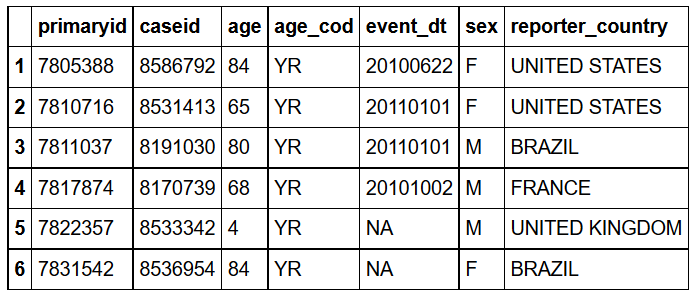
As we’ve seen, both approaches will yield the same result. It’s recommended that you pass in a primary key column or the * character to the COUNT function to count the number of rows in a table.

Here’s an example of counting the number of rows for a column that has NULL values: This will count all rows, including those with a value of NULL in any column. Of course, to count all rows, you can instead pass in the asterisk character as the argument to COUNT. Since id is the primary key of our table-and therefore has unique and non- NULL values-it’s a good candidate for counting the total number of rows in the table. This function takes the name of the column as its argument (e.g., id) and returns the number of rows for this particular column in the table (e.g., 5).Īs mentioned above, when you specify a column instead of the asterisk, the function will only count non- NULL values. Use the COUNT aggregate function to count the number of rows in a table. In this case, COUNT(id) counts the number of rows in which id is not NULL. Instead of passing in the asterisk as the argument, you can use the name of a specific column: Solution:ĬOUNT(*) counts the total number of rows in the table: I wondering what is the best format for that records keep a long or a string of. Our database has a table named pet with data in the following columns: id, eID (electronic identifier), and name. Click on that button record the date and time of that click (in sqlite).

The ORDER BY clause goes after the FROM clause but before the LIMIT.You’d like to determine how many rows a table has. To modify the order so that the most recent year and the most common names are on top: SELECT * FROM baby_names ORDER BY state DESC, year DESC, count DESC stateīeing able to order the result rows is particularly useful when using LIMIT, as it allows us to quickly return just the "top 3" or "bottom 10" of the results. the least common names: SELECT * FROM baby_names ORDER BY state DESC, count ASC The following (somewhat nonsensical) query will return the rows in reverse-alphabetical order of state, then in ascending order of count, i.e. The ORDER BY keywords are only used once.

Just add more column names and ordering keywords – i.e. a tie, we can specify more columns to use in the sorting criteria. In the case when the column to sort by has duplicate values, i.e. To sort the baby names table in descending order of count: SELECT * FROM baby_names ORDER BY count DESC If we want to explicitly specify ascending order, we use the ASC keyword: ORDER BY "some_column_name" ASC The syntax looks like this: ORDER BY "some_column_name" DESC If we want to find the rows with the largest count values, we use the DESC keyword. When it comes to numbers, that means smallest first. Here's a standalone example: SELECT * FROM baby_names ORDER BY count īy default, ORDER BY sorts in ascending order. The basic syntax is: ORDER BY "some_column_name" The ORDER BY clause, as you can imagine, let's us specify the sorting order of the returned data rows. Thus, the following queries will not work: SELECT * LIMIT 1 FROM baby_names SELECT * LIMIT 1 FROM baby_names The ORDER BY clause

So the key thing to notice is the specific order and arrangement of the SQL statement: just as FROM comes after the SELECT clause, LIMIT comes after both. Mind the ordering of the syntaxĪt this point, we've only covered three different clauses. Even before you get to exporting data, returning 1,000,000 rows will just be slower than returning 10 rows, all other things being equal. LIMIT is a good way to reduce the execution time. But the main concern is that in the real-world, retrieving data rows takes computational time. Why use LIMIT when, well, we could just have all the data? Remember that more data is not always better. Pretty easy, there's not much more to LIMIT than the keyword itself, followed by the number of rows we want to see. With LIMIT, we can restrict the number of rows returned: SELECT * FROM baby_names LIMIT 1 This document strives to explain what each of those numeric result codes means. With SELECT, we were able to specify exactly how many columns we wanted in the returned dataset. Overview Many of the routines in the SQLite C-language Interfacereturn numeric result codes indicating either success or failure, and in the event of a failure, providing some idea of the cause of the failure.


 0 kommentar(er)
0 kommentar(er)
